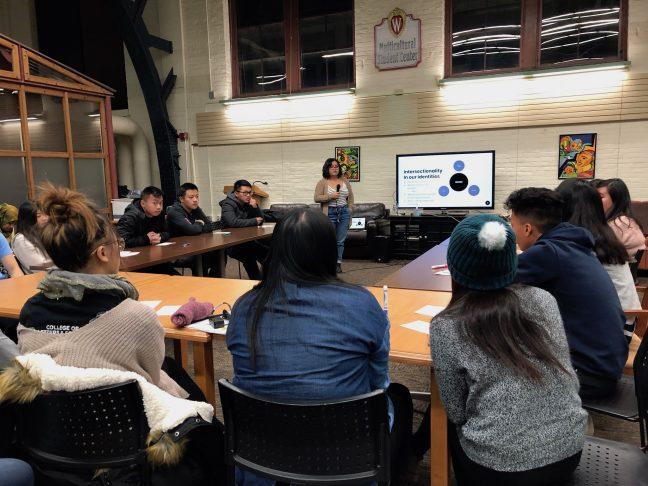Members of University of Wisconsin’s Hmong community met in the Multicultural Student Center Wednesday evening to discuss challenges within and outside of their community.
Sophomore Emily Her, a member of the Hmong American Student Association, led the discussion. Its focus was on getting ideas for her project “I Am Here,” a design brand that features different minorities and the struggles they face in America. Her’s goal was to find a prevalent issue the Hmong community wanted her to address with her project.
Students discussed what being Hmong and Hmong-American means to them, the intersectional identities they struggle with and the generational differences they feel between themselves and their parents.
City Council approves funding for Kajsiab House after emotional hearing
Students, like HASA freshman representative Alina Xiong, voiced their feelings about different Hmong traditions that feel out of date to them.
“When I think of the Hmong community I think of refugees, more traditional thinking,” Xiong said. “But if you’re Hmong-American, you’re more about the future … the now.”
Additionally, Xiong said it’s hard for people who are LGBTQ+ to find their own identity within the Hmong community.
Echoing a similar sentiment, Her said traditional ideas of femininity and masculinity often prevent LGBTQ+ people from finding their place in their culture.
Ying Xiong, a fifth-year UW student and member of Niam Laus Niam Hluas, a social support system for Hmong American women on campus, mentioned her queer friend’s struggle at a Hmong family’s gatherings.
“It was hard for him to kind of find his place … [his family] kind of dehumanized him,” Ying Xiong said.
Mental health was another concern students brought up as a challenge the Hmong community commonly faces. Their cultural mentality to “keep going” can be harmful and often aggravate mental health issues, Her said.
UW alumna among first Hmong-American women to earn Ph.D. in nursing
Sophomore Rose Lee, who is also the public relations chair of HASA, talked about the difficulties in transitioning from home to college. She said coming to terms with taking care of her mental health was scary and abnormal to her when she arrived on campus.
Her said the goal of the project is to build a united movement among minority communities through design.
“I think that within our community that we don’t really talk about mental health … when we come to college or somewhere on your own, it’s just harder,” Lee said.













